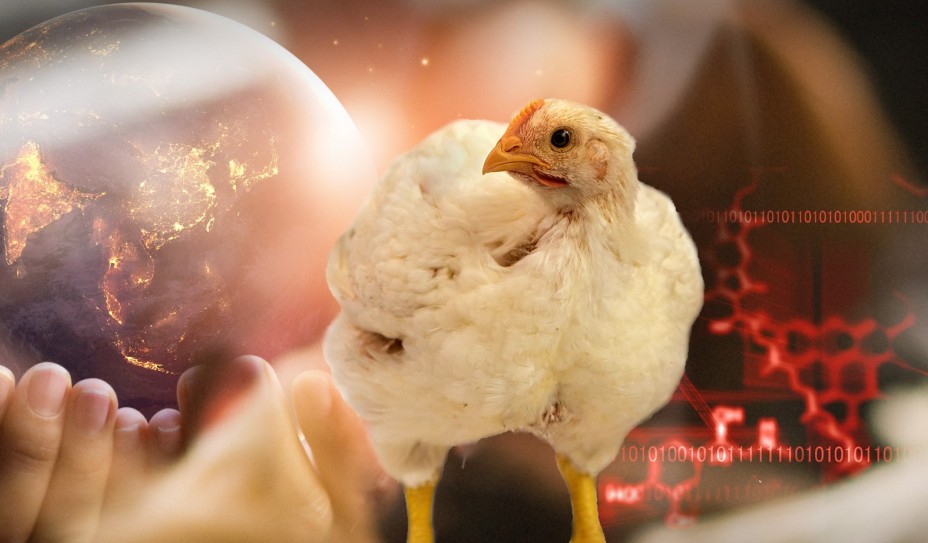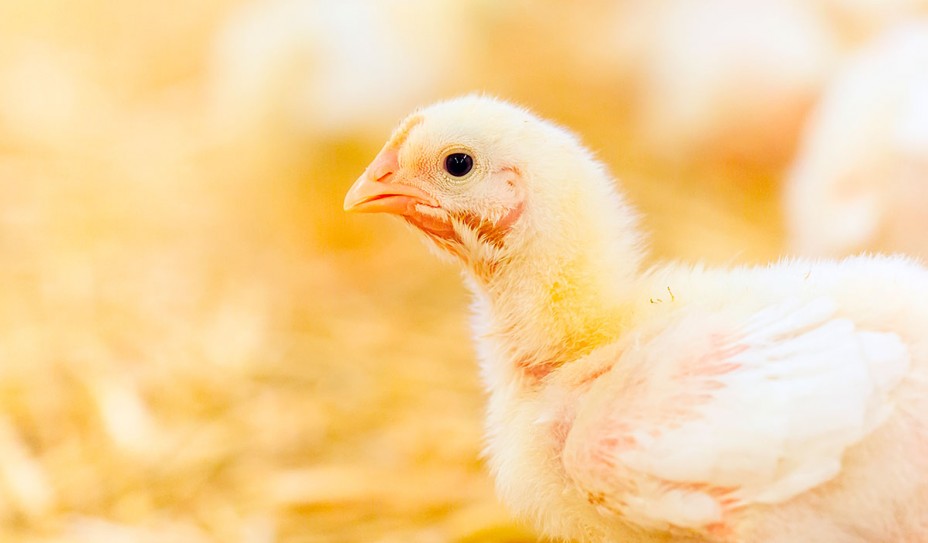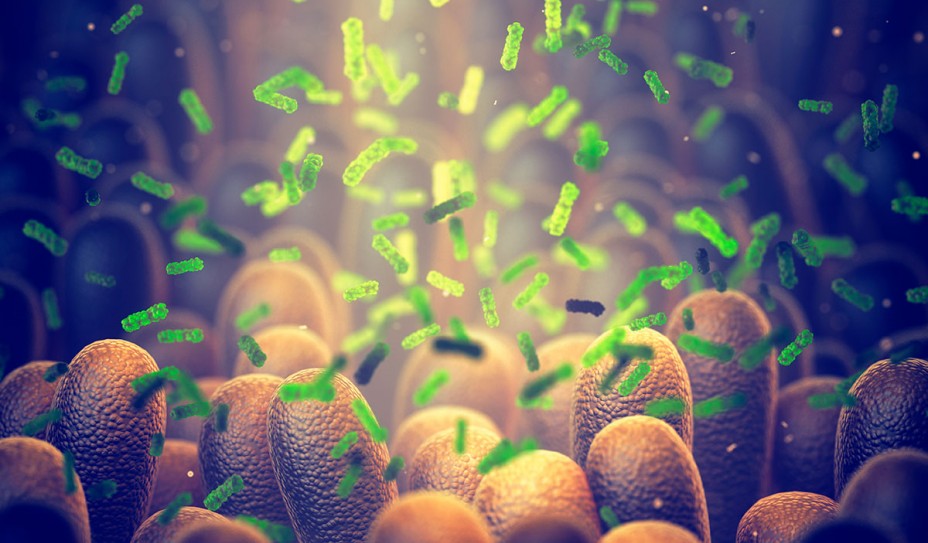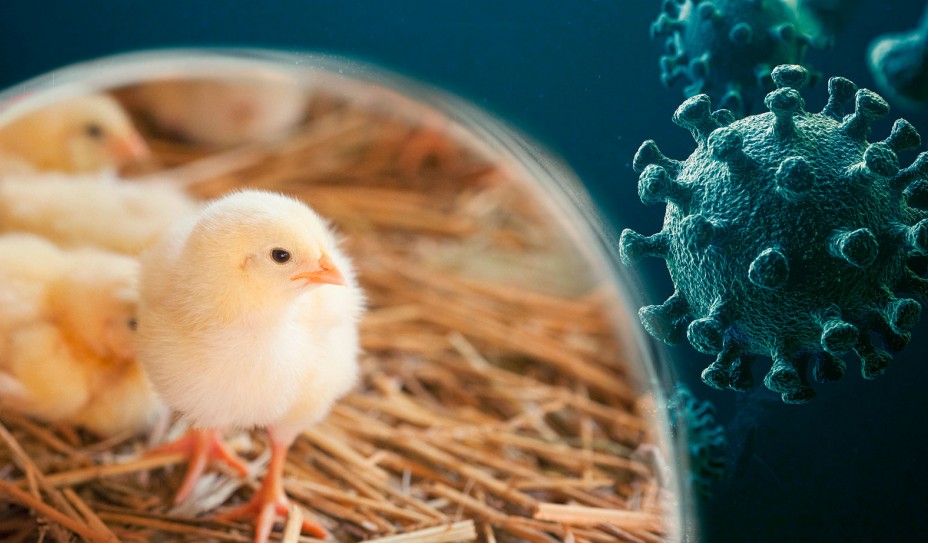12th February 2021
Antibiotic reduction in poultry production. What nutritional tools are available to poultry farmers?
Published 12. October 2020
An interview with AB Neos’s Poultry Technical Manager Mark Karimi

Q: Nowadays everybody is talking about poultry farming with no antibiotics whatsoever. How do you see it?
A: First of all, I’d like to say that probably the most important development in medical science in the last 60 years is antibiotics, not only for human treatment, but also in animal husbandry. It is very important to know that the fundamental use of antibiotics in animal husbandry is to treat sick animals; no creature deserves suffering when a solution is available to avoid it. Therefore, there is no question about the treatment of infected animals with antibiotics.
However, in poultry farming and, just on some occasions, it would be more efficient to use antibiotics for the prevention of bacterial disease too. In such cases, the birds that receive antibiotics are not infected, but the risk of infection is extremely high or even inevitable. In this case, a veterinary surgeon may decide to provide a prophylactic treatment, which of course is based on his/her epidemiological and clinical knowledge.
Q: So, you think there is no risk in treating birds with antibiotics?
Well, I believe that if we want to do a proper farming, we must consider animals’ welfare very seriously. There is no question that sick animals must be treated and not suffer from the pain caused by infections. However, the whole debate starts when we decide to increase the bird’s production yield by giving them sub-therapeutic doses of antibiotics, which are known as “growth promoters”. Fortunately, such an approach has been banned in the EU and some other parts of the world for some years now. Another problem is when the prophylactic treatments become a norm in poultry operations and are considered as the only way of disease prevention on poultry farms.

Q: It seems you believe antibiotics must be used just at the right time and in the right conditions?
Yes, you are absolutely right! It is like everything else in life, you should do it at the right time and in the right conditions. Replacing good farm management and correct nutrition with unnecessary antibiotic application is one of the worst things happening on some poultry farms at the moment. As I said, I strongly believe in animal welfare and well-being. For an animal facing a bacterial infection, probably antibiotic treatment is one of the most effective approaches. However, the important point is to actively try to control the actual cause of the problems rather than focusing on post-infection treatments. We need to find out what we could have done to prevent such problems occurring in the first place. We should question ourselves; have we really done enough to make our birds healthy and fit during the entire production period?
Q: You are talking about prevention. But, for sure, there are some conditions which are out of the farmers’ hands?
When it comes to livestock farming, the best results are achieved by farmers who have the most control on their operation. Let me give you an example - it is a fact that the genetic selection for increased bodyweight in modern broilers and turkey birds has led to a decrease in the relative weight of their primary and secondary immune organs. For sure, such a change has lowered the bird’s ability to resist diseases as much as they used to. What is the farmer’s responsibility in this case? Probably keeping the bio-security tight is the first thing to do. However, this is not the only thing to do to prevent problems. Unwanted micro-organisms may find their way into a chicken house. The question is: how prepared are your birds to fight back? And, in this regard, have we provided them with the best possible environment, health plan and nutritional help to make sure they face no unnecessary stress?
Q: You said “providing animals with the best environment, health plan and nutritional help”, how are these related to the birds’ ability to fight back microbial infections?
First of all, if a farm manager keeps the environment around his/her birds clean and hygienic, the possibility of bacterial infection is much less. Providing birds with the correct temperature and humidity, which is a result of proper ventilation, is all in the farm managers’ hands. In terms of birds’ well-being and health, good veterinary surgeons usually render accurate and practical health plans based on the farm/operation’s characteristics and area/region’s specification. Bacterial infections might be avoided if farm managers follow those plans incisively and communicate with their vets regularly. It is also crucial to know that nutrition is as important as the first two factors that I mentioned. The fundamental role of nutrition to avoid disease has been studied by many scientists around the world.

Q: Can you give a more specific example of how nutritional management helps farmers to control disease on their farms, so reducing antibiotic treatments?
A good example is the broiler feed intake. Feed intake is an extremely important factor that determines the rate of growth and the efficiency of nutrient utilisation in modern broilers. We know that broilers not only struggle to reach their full genetic potential, but also get severely stressed if their full nutritional requirement is not met. Any sort of small nutrient imbalance in feed may cause birds to lower their intake. This might be quite a stressful experience for an animal with such appetite.
Although a short term stress is manageable by bird, exposure to stressors for extended time results in the secretion of the stress hormone (corticosterone). Corticosterone is responsible for many quantitative and qualitative changes in the bird’s organs and tissue functionality when it remains in the blood circulation for long periods. Corticosterone can increase glycogenolysis and decrease glycogen synthesis. It results in a depletion of glycogen, which is found in a variety of tissues, particularly the liver and muscles. From the birds’ performance point of view, the most detrimental effect of this action is the catabolism of structural protein to free amino acids for use as gluconeogenic substrates. It is known that stress causes the bird to preferentially metabolize glucose. Such a reaction will alter the metabolism of carbohydrates, proteins, lipids and minerals in birds and the result is the depletion of structural protein and the deposition of abdominal fat.
Corticosterone may also cause some other changes, such as impaired immune system function and regression of the lymphoid tissues, which is usually accompanied by an increased heterophil-to-lymphocyte ratio. There are also some indirect effects of the circulation of corticosterone in the blood stream for a long period of time. One of them is the pH alteration of the bird’s gastro intestinal tract. Such a change will disturb the balance of gut microbiota to a large extent, which may provide a good environment for certain species of bacteria or fungi to thrive vigorously and cause gut dysbiosis. In some cases, antibiotic treatment to control the problem is inevitable.
Immunosuppression due to ingestion of some non-infectious agents in feed is another good example. Infections may lead to immunosuppression by destroying immune cells or changing their equilibrium. What is more, immunosuppression itself increases the chance of infection. The most reported effect of stress on the immune system is the suppression of immune organs and immune cells.
Some environmental and managerial stressors, such as chick handling in the hatchery/farm, transport from the hatchery to farm, early vaccination in the hatchery/farm, etc can’t be avoided. Even some later stresses, such as heat stress, post-vaccination stress and also microbial challenges are quite hard to be avoided. However, when it comes to nutrition, I believe we have enough tools and the knowledge to support our birds.

Q: When you say “when it comes to nutrition, we have enough tools and the knowledge to support our birds”, exactly what do you mean by this?
Raising poultry is not new to humankind, for thousands of years we’ve raised chickens for their meat and eggs. During the last 70 years or so, when we gradually learned how to select the best breeds to grow, we also learned how to feed them to reach their potential. Although we are still learning and far from the perfection, through thousands of experiments carried out around the world we have discovered many invaluable solutions for our birds’ nutritional issues. Nowadays, there are large numbers of high quality and sustainable ingredients that we can use in our birds’ feed. Among them, there are some highly digestible, functional ingredients with specific bioactive components, offering fantastic benefits to both the health and performance of animals. Poultry producers need to pick the right ones that will maximise their flock’s results.
Q: You talked about functional ingredients. What exactly are they and how can they reduce the chance of infection, so reducing antibiotic therapy on farms?
Functional ingredients are ingredients that provide health and economic benefits beyond basic nutrition. They usually contain bio-active compounds which have specific functional properties. These properties may provide solutions to recurrent challenges, rather than only focusing on growth.
Before I answer your question, I’d like to say that there are not just nutrients which enter into the bird’s gastrointestinal tract (GIT). There are always some non-nutrients within the feed that get into the bird’s digestive tract. With each meal, billions of micro-organisms find their way into the GI tract. Although the majority of them are quite harmless and millions of them get killed in the bird’s mouth, crop and proventriculus, still a large number of them end up in the bird’s intestine and may get into direct contact with epithelial cells. Therefore, there are always different sorts of viruses, bacteria and parasites which constantly challenge the whole digestive system. Moreover, there are always some metabolites within the feed that we call anti-nutritional factors (ANFs). Whether the effect is seen in the lumen or the intestinal wall, via a cascade of reactions, both anti-nutritional factors and pathogenic micro-organisms influence the intestinal health of the bird. If a bird’s GIT can withstand this constant challenge, digestion and absorption will be carried out smoothly. And if not, the bird’s health and performance will be compromised.
Now let’s answer your question, “how can a functional ingredient help?”. A particularly good example is Alphasoy Gold, a unique product that we do here at AB Neo. In 2017, our scientists started a project to create a functional, protein-rich ingredient tailored specifically to the needs of modern young poultry. The aim was to develop an affordable ingredient with both nutritional and functionality properties, which helps young birds to thrive and grow efficiently from the early stage of life. AB Neo scientists know that soybean meal (SBM) and other unprocessed protein sources are hugely variable in consistency and quality, depending on the growing season, source of origin and also processing methods. Moreover, they know that anti-nutritional factors within conventional soybean meal sometimes reach an unbearable level. All of these factors may cause a great deal of stress to young birds. Therefore, we decided to design a process to remove all of these invariabilities as well as unlock maximum nutritional and functional value from the soybean meal. In this unique process, we managed to reduce all known ANFs to a safe level, so minimised the risk of stress caused by them. We also managed to improve digestibility of all key amino acids by up to 2% (measured in broiler birds). By increasing the digestibility of protein in the small intestine, there is less chance of protein fermentation in the bird’s ceca and large intestine, hence less chance for thriving harmful bacteria and noxious metabolite that they produce.
The Alphasoy Gold process alters the carbohydrate profile of soybean meal by reducing fermentable carbohydrates and increasing digestible ones. Such a process creates a product with a unique, healthy carbohydrate content and moreover, unlocks around 16% more energy (compared to standard SBM). The bio-active components of Alphasoy Gold support the development of an optimal gut environment and create the right condition for effective digestion and absorption of nutrients. They also boost the bird’s immune system with their unique, immune-modulatory properties. All of these properties create a healthy and efficient gut, which keeps enteric pathogens at bay.
I hope I have been able to give you a clear example of how we can minimise the use of antibiotics on farm by keeping the bird’s health and well-being under control. It is not an easy job, but being aware of the nutritional tools available to us makes it more achievable for sure.
